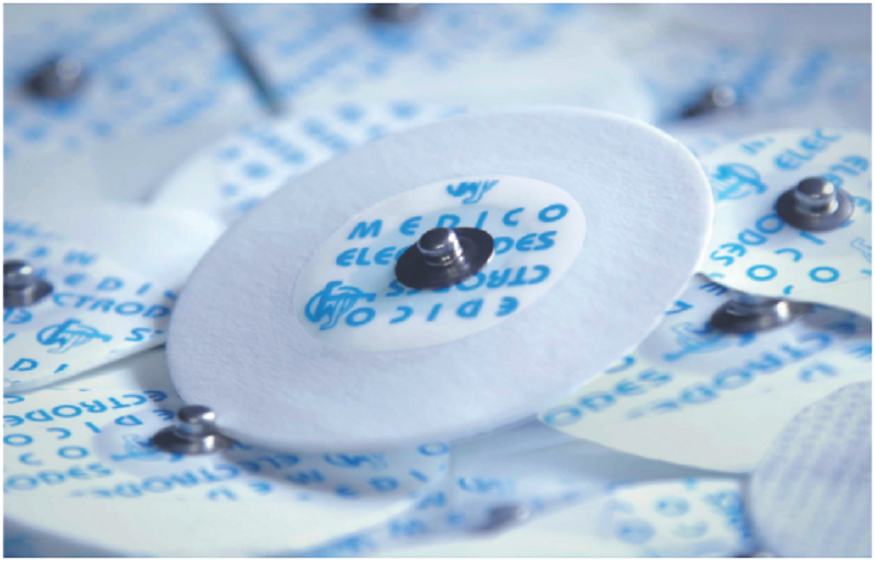In the realm of biomedical diagnostics and therapeutics, electrodes play a pivotal role, particularly in applications like electrocardiography (ECG) and transcutaneous electrical nerve stimulation (TENS). These electrodes serve as conduits for electrical signals, facilitating the monitoring of cardiac activity in ECG and delivering therapeutic electrical impulses in TENS therapy. The intricate world of ECG electrodes and TENS electrode adhesive gel explores their mechanisms, applications, and innovations.
Table of Contents
Understanding ECG Electrodes
Fundamentals of Electrocardiography
Electrocardiography, commonly known as ECG or EKG, is a non-invasive diagnostic technique used to measure the electrical activity of the heart. This diagnostic tool is crucial for detecting various cardiac abnormalities, including arrhythmias, myocardial infarctions, and conduction abnormalities.
Components of ECG Electrodes
ECG electrodes are essential components in the ECG setup, serving as interfaces between the patient’s skin and the ECG machine. These electrodes typically consist of a metal conductor, an adhesive layer, and a connector. The metal conductor, often made of silver/silver chloride, ensures optimal electrical conductivity, while the adhesive layer secures the electrode to the patient’s skin, minimizing motion artifacts.
Types of ECG Electrodes
Disposable Electrodes: These are single-use electrodes commonly used in clinical settings due to their convenience and hygiene. Disposable electrodes eliminate the need for cleaning and disinfection between uses, reducing the risk of cross-contamination.
Reusable Electrodes: Reusable electrodes are designed for multiple applications after thorough cleaning and sterilization. While they offer cost savings in the long run, proper maintenance and sterilization protocols are crucial to ensure their efficacy and safety.
Holter Monitoring Electrodes: Holter monitoring electrodes are specialized ECG electrodes designed for ambulatory ECG monitoring over an extended period. These electrodes are typically smaller and more lightweight to enhance patient comfort during prolonged wear.
Advancements in ECG Electrodes
Recent advancements in ECG electrode technology have focused on enhancing conductivity, comfort, and longevity. Innovations such as solid gel electrodes, which eliminate the need for electrolyte gels, and dry electrodes, which do not require skin preparation or conductive gels, have simplified the ECG recording process and improved patient experience.
Exploring TENS Electrode Adhesive Gel
Transcutaneous electrical nerve stimulation (TENS) is a therapeutic modality that utilizes electrical currents to alleviate pain and promote healing. TENS therapy involves the application of electrodes to the skin surface, delivering controlled electrical impulses to target nerve fibers and modulate pain perception.
Role of Electrode Adhesive Gel in TENS
The effectiveness of TENS therapy hinges on the efficient transmission of electrical impulses from the electrodes to the underlying nerve fibers. Electrode adhesive gel serves as a conductive medium, facilitating the transfer of electrical energy while ensuring optimal skin contact and adhesion.
Characteristics of TENS Electrode Adhesive Gel
Conductivity: The primary function of TENS electrode adhesive gel is to enhance electrical conductivity between the electrode and the skin, minimizing impedance and maximizing the transmission of electrical impulses.
Adhesion: Adhesive gel formulations are designed to adhere securely to both the electrode surface and the patient’s skin, preventing displacement or detachment during TENS therapy sessions.
Skin Compatibility: TENS electrode adhesive gels are formulated to be hypoallergenic and non-irritating, minimizing the risk of skin reactions or sensitivities, especially during prolonged use.
Types of TENS Electrode Adhesive Gel
Water-Based Gels: Water-based electrode adhesive gels are commonly used in TENS therapy due to their high conductivity and compatibility with various electrode materials. These gels are easy to apply and remove, leaving minimal residue on the skin.
Hydrogel Pads: Hydrogel pads integrate the adhesive gel directly onto the electrode surface, eliminating the need for separate gel application. These pre-gelled electrodes offer convenience and consistency in gel application, ensuring uniform conductivity across the electrode surface.
Innovations in TENS Electrode Adhesive Gel
Recent advancements in TENS electrode adhesive gel technology have focused on enhancing conductivity, longevity, and user experience. Formulations incorporating conductive nanoparticles or hydrophilic polymers aim to improve conductivity and reduce impedance, optimizing the therapeutic efficacy of TENS therapy. Additionally, innovations in gel formulations have led to the development of long-lasting adhesive gels that maintain their properties throughout extended therapy sessions, minimizing the need for frequent gel replacement.
Advantages of tens electrode adhesive gel
Transcutaneous electrical nerve stimulation (TENS) therapy has gained popularity as a non-invasive and drug-free method for pain relief and management. TENS electrodes, along with their adhesive gel, play a crucial role in ensuring the effectiveness and comfort of this therapy.
1. Enhanced Conductivity
The primary function of TENS electrode adhesive gel is to improve the conductivity between the electrode and the skin. By creating a conductive interface, the gel facilitates the transmission of electrical impulses from the TENS unit to the underlying nerve fibers. This enhanced conductivity ensures that the therapeutic electrical stimulation effectively reaches the targeted areas, maximizing the therapeutic benefits of TENS therapy.
2. Optimal Skin Contact
TENS electrode adhesive gel helps to maintain optimal skin contact between the electrode and the skin surface. Proper skin contact is essential for the efficient delivery of electrical impulses and ensures uniform stimulation across the treatment area. The gel’s adhesive properties help to secure the electrode in place, preventing it from shifting or dislodging during therapy sessions and maintaining consistent contact with the skin.
3. Reduced Skin Irritation
High-quality TENS electrode adhesive gels are formulated to be hypoallergenic and gentle on the skin. These gels minimize the risk of skin irritation, allergic reactions, or discomfort, even during prolonged use. By providing a protective barrier between the electrode and the skin, the gel helps to mitigate the potential for skin abrasions or friction-related injuries, enhancing patient comfort and compliance with TENS therapy.
4. Long-lasting Adhesion
TENS electrode adhesive gels are designed to maintain their adhesive properties over extended periods, ensuring secure attachment of the electrodes throughout therapy sessions. This long-lasting adhesion minimizes the need for frequent reapplication of the electrodes and reduces interruptions during treatment. Patients can experience uninterrupted TENS therapy without worrying about electrode displacement or loss of effectiveness due to inadequate adhesion.
5. Easy Application and Removal
TENS electrode adhesive gels are typically formulated for easy application and removal. They have a smooth consistency that allows for effortless spreading onto the electrode surface and easy placement on the skin. Additionally, these gels are designed to leave minimal residue upon removal, facilitating quick and hassle-free cleanup after therapy sessions. The ease of application and removal enhances the overall patient experience and promotes adherence to TENS therapy regimens.
Conclusion
ECG electrodes and TENS electrode adhesive gel are indispensable components in biomedical diagnostics and therapeutics, facilitating the monitoring of cardiac activity and the delivery of therapeutic electrical impulses. As technology continues to evolve, innovations in electrode design and gel formulations promise to enhance the efficacy, comfort, and usability of these essential medical devices, ultimately benefiting patients and healthcare providers alike.

